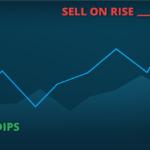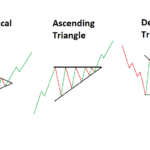Why do we need Trading Blocs?
Let’s begin with one simple truth – no country, no matter how great or powerful, can endlessly grow its own economy. For true, long-term economic success, any nation would require trade partners.
Most countries specialise in harvesting, creating, or growing very specific items. These may be the result of geological location (when it comes to assets such as gold and oil for example), specific weather that enables certain food items to grow (like coffee or wheat) or a wealth of human knowledge and skilled labour that enables high-tech industries to flourish, such as Ireland or India.
Some countries enjoy the production of more than one type of item and can, therefore, export those items.
But there’s something to be said for trading with your neighbours as a means of maintaining a proper relationship, not to mention the influx of products you might not otherwise have access to.
What Are Trading Blocs?
Now that we’ve established the fact that no country can truly be an island, let’s take things a step further. Normal trade between countries usually involves quotas, taxes, import/export delays due to regulation and many other obstructions that can potentially hinder the very reason countries embarked on the trade deal, to begin with.

So, when two (or more) countries decide to make their trade relationship a more frequent one, they may enter into a framework agreement with each other. One type of agreement in question simply lowers or completely eliminates some of the above-mentioned barriers to trade, allowing items to flow more freely from one country to another.
Such agreements have been in place for centuries, with more modern iterations coming to life via the German empire in the late 19th century.
The rapid expansion of capitalism in the latter half of the 20th century has led to an increase in trade. By the end turn of the century, – more than 50% of global trade was conducted within various regional trading blocs.
There are those that oppose the system, though, claiming that blocs restrict free global trade and help route certain products into certain hands, regardless of supply & demand elsewhere across the globe.
More Than One Trading Bloc
There are actually a whole host of trading bloc types, and here are just a few of them, along with relevant examples:

- Preferential trade area grants participating countries better access to products, usually by lowering tariffs. Examples include India – Afghanistan, the Latin American Integration Association.
- Free Trade Area – A cooperation between two or more nations to help lower tariffs, import quotas and other such items that may interfere with the trade of goods. Such areas usually have similar tariffs on exports and imports to non-member countries in an attempt to normalise trade relations between members. Examples: EUCU, ASEAN.
- Customs Unions – These are essentially a free trade area with the added “bonus” of a pre-agreed-upon common external tariff. Examples: Central American Common MarketA location or entity where people and entities can negotiate and trade assets of value., Switzerland-Liechtenstein.
- Common Markets – Considered to be a more advanced type of free trade area, it sheds further impediments to the free-flow of goods and certain facets of production, including labour, etc. but maintains regulations for other forms of trade. The Eurasian Economic Space, ASEAN Economic Community, are such markets.
- Economic Union – This type of bloc is the result of a common market being combined with a customs union. Countries share similar policies on regulation, movement of services & goods, but with certain restrictions being left in place. Examples: Gulf Cooperation Council, CARICOM.
- CurrencyA financial medium for the exchange of value. In economics, it is the monetary system employed by a ... Union (or monetary union) – For the most part, such an agreement is reached between two (or more) countries as a logical progression of trade relations, but it is not a necessity. With such an agreement, member states adopt the same currency to ease trade further, and sometimes even adopt a common monetary policyThe tool by which central banks control the flow and availability of money through interest rates, r... and authority; for example, the Eurozone.
- Customs and monetary union – A relatively straightforward combination of monetary and customs unions, with all the implications those two bring to the table. This is considered to be one of the most advanced forms of trade cooperation between countries and abolishes nearly all restrictions and separations between member states. CEMAC, UEMOA are two such examples.
- Economic and Monetary union – The “holy trinity” of trade blocs, this union contains a common market, customs union and monetary union in a single pact along with all existing benefits that lesser forms come with. Examples include EMU, OECS.
So now that you are aware of the various types of blocs that exist, there is really only one more important question to ask which is the following one:
How Have Trading Blocs Encouraged International Trade?

We briefly touched on this very topic early on, but we’d like to expand on it slightly now that you have more information on the matter.
The answer to the question above really depends on your economic stance.
There is no denying that trade blocs have an incredible upside for participating members: the ability to freely ship items, technology or even for people to find gainful employment in a neighbouring country is priceless. Additionally, the free flow of said goods is always beneficial to an economy and to consumers that end up paying a lower premium on products – from vegetables all the way to cars.
Detractors, however, will be quick to pointThe unit of price change for bonds (1%), futures (0.01%), shares ($1) and mortgage fees (1% of the p... out that trade blocs run contrary to the very notion at the heart of free trade, which is that products can & should be sent to/bought by those that have the most need or money to invest in those items.
For example: If the U.S.A discovers a large new depositTo place money in an account – usually with the aim of preserving or increasing its value. of oil within its borders, it is required to sell it to Mexico & Canada at a lower rate due to pre-existing trade agreements. But that very agreement will prevent it from possibly being able to sell that oil at a higher cost elsewhere, thus maximising their profits.
The argument will likely continue to rage for a long time to come, but the world continues to march along towards greater levels of financial cooperation as more & more trade blocs are currently in different levels of formation, which means that the future is only brighter if your country is a part of one or more of these blocs.











